As veterinary professionals, we understand the profound bond between cats and their human companions. Our furry friends bring joy, comfort, and companionship to our lives, and it's our responsibility to ensure their safety and well-being in every aspect.
One often overlooked aspect of feline care is the potential hazards posed by indoor plants.
In this article, we'll delve into the realm of non-toxic plants specifically curated for cat households. We'll explore the critical importance of selecting greenery that poses no harm to our feline patients, emphasizing the significant role that plants play in creating enriched environments for both cats and humans.
Whether you're a seasoned plant enthusiast or a newcomer to the world of indoor gardening, our guide will provide essential insights into choosing the safest and most beneficial plant companions for your beloved cats.

Let's embark on this journey to cultivate a home environment where plants and pets can coexist in harmony!
Understanding Plant Toxicity and Its Impact on Cats
Plants have long been admired for their ability to infuse spaces with tranquility and vitality. They not only reduce stress and enhance mental well-being for humans but also offer similar benefits to our feline companions, who can experience the calming effects of greenery.
However, as a veterinarian, it's crucial to educate about the potential dangers posed by certain plants commonly found in households.
While many plants offer aesthetic appeal and even health benefits, some can be toxic to our feline companions if ingested. Cats, known for their curiosity, often explore their surroundings, including household plants. So, understanding which plants are toxic and the associated risks is essential for safeguarding the well-being of our beloved cats.
The main risks associated with toxic plants and the following ones:
- Gastrointestinal Upset: Ingesting toxic plants can lead to symptoms such as vomiting, diarrhea, and abdominal pain.
- Oral Irritation: Many toxic plants contain substances that irritate the mouth, tongue, and throat, leading to drooling and difficulty swallowing.
- Organ Damage: Some plants can cause severe damage to vital organs such as the kidneys or liver, resulting in life-threatening complications if left untreated.
- Neurological Symptoms: Ingestion of certain toxic plants may lead to neurological symptoms such as tremors, seizures, or disorientation.
In response to this concern, the concept of non-toxic plants for cat households emerges as a crucial consideration for pet owners.
What to Consider When Choosing Non-Toxic Plants
Choosing the right plants for a cat-friendly environment involves more than just ensuring they are non-toxic. It's essential to consider factors such as maintenance requirements, adaptability to indoor environments, aesthetics, and potential benefits for air quality.
Here are some key criteria to keep in mind when selecting non-toxic plants for your home:
Low Maintenance Requirements:
- Opt for plants that are easy to care for and require minimal attention. Cats can be mischievous, so selecting plants that can withstand occasional nibbling or playful pawing without wilting or becoming damaged is ideal.
- Consider factors such as water and light requirements, temperature tolerance, and susceptibility to pests or diseases when choosing low-maintenance plants.
Adaptability to Indoor Environments:
- Many popular houseplants thrive indoors, but not all are well-suited to the specific conditions found in homes. Look for plants that can thrive in typical indoor environments with limited sunlight and controlled temperatures.
- Consider the size of your living space and whether the plant will have adequate room to grow without becoming cramped or overcrowded.
Known Benefits for Air Quality:
- Certain plants have been shown to improve indoor air quality by filtering out pollutants and toxins, such as formaldehyde, benzene, and xylene. Look for plants that are known for their air-purifying properties to create a healthier environment for both you and your cat.
- In the following sections, we'll highlight 15 of the best non-toxic plants for cat people, providing descriptions, care tips, and benefits for each plant to help you make informed choices for your indoor garden.
Discover the Top Cat-Friendly Plants for Your Home
Spider Plant (Chlorophytum comosum)
-
Description: Spider plants are known for their long, arching leaves and small white flowers. They are easy to care for and produce baby plantlets that can be propagated.
-
Care Tips: Keep the soil evenly moist and provide bright, indirect light. Spider plants thrive in moderate temperatures and benefit from occasional misting.
-
Benefits: Spider plants are excellent air purifiers, removing toxins such as formaldehyde and carbon monoxide from the air. They are safe for cats and, additionally, they can provide mental stimulation and enrichment for cats, as they can bat at the dangling plantlets or hide among the arching foliage, promoting natural behaviors and reducing boredom.
Boston Fern (Nephrolepis exaltata)

-
Description: Boston ferns are lush, feathery plants with cascading fronds. They add a touch of elegance to any room and thrive in humid environments.
-
Care Tips: Keep the soil consistently moist and provide indirect light. Mist the foliage regularly to maintain humidity levels, especially during dry winter months.
-
Benefits: Boston ferns act as natural air humidifiers, releasing moisture into the air and improving indoor air quality. They are safe for cats and cats like this plant because the dense foliage creates a cozy and secluded space that appeals to cats' instincts for seeking out secure and sheltered spots. Moreover, the fronds of Boston Ferns have a texture that cats may find intriguing to touch or bat, and they also emit a subtle earthy scent that can pique a cat's curiosity and encourage them to investigate or interact with the plant.
Areca Palm (Dypsis lutescens)

-
Description: Areca palms are tall, graceful plants with feathery fronds arranged in a symmetrical pattern. They are well-suited to bright, indirect light and can add a tropical vibe to your home.
-
Care Tips: Allow the soil to dry out slightly between waterings and provide bright, indirect light. Areca palms benefit from occasional misting to maintain humidity levels.
-
Benefits: Consider getting an Areca Palm because of its air-purifying properties. This palm species has been identified by NASA's Clean Air Study as one of the most effective plants for removing indoor air pollutants. They are safe for cats, and cats are often attracted to Areca palms because they have long, thin leaves that sway gently with air currents, creating a dynamic and visually appealing display.
Bamboo Palm (Chamaedorea seifrizii)

-
Description: Bamboo palms are compact, clumping palms with slender, bamboo-like stems and delicate fronds. They are well-suited to low-light conditions and are easy to care for.
-
Care Tips: Keep the soil evenly moist and provide bright, indirect light. Bamboo palms can tolerate lower light levels but may require more frequent watering in dimmer conditions.
-
Benefits: Bamboo palms are effective at filtering indoor air pollutants, including formaldehyde, benzene, and trichloroethylene. Cats are instinctively drawn to plants that resemble their natural outdoor environment. Bamboo Palms, with their tropical appearance and lush green foliage, may evoke associations with the dense foliage found in the wild, making them attractive to cats seeking a slice of nature indoors. A fascinating aspect of the Bamboo Palm is its resilience and adaptability to indoor environments.
Peperomia (Peperomia spp.)
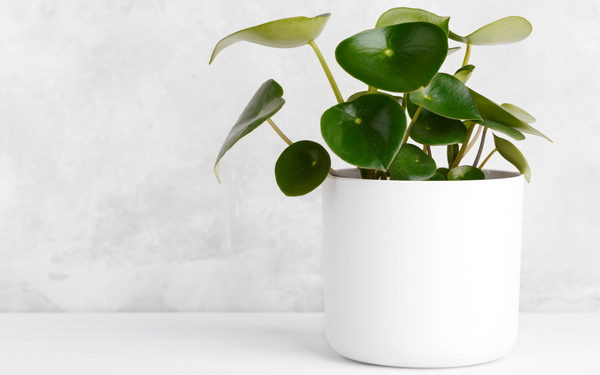
-
Description: Peperomias are compact, low-growing plants with thick, succulent-like leaves. They come in a variety of shapes, sizes, and colors, making them versatile additions to any indoor garden.
-
Care Tips: Allow the soil to dry out slightly between waterings and provide bright, indirect light. Peperomias prefer moderate temperatures and can benefit from occasional pruning to maintain shape.
-
Benefits: Peperomias are non-toxic to cats and are relatively low-maintenance, making them ideal for busy households.
Friendship Plant (Pilea involucrata)
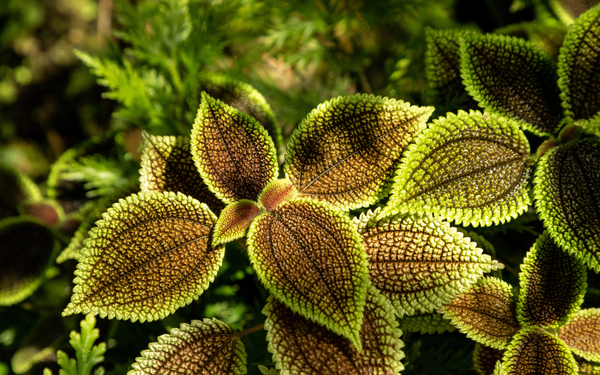
-
Description: Friendship plants are compact, bushy plants with round, textured leaves that have a quilted appearance. They are easy to care for and can thrive in a variety of indoor environments.
-
Care Tips: Keep the soil consistently moist and provide bright, indirect light. Friendship plants benefit from occasional pruning to encourage bushy growth.
-
Benefits: Friendship plants are safe for cats and add a pop of greenery to any room. They derive their common name from their propensity to produce numerous plantlets or "pups" around the base of their stems. These plantlets can be easily propagated and shared with friends.
Prayer Plant (Maranta leuconeura)

-
Description: Prayer plants are named for their unique leaf movement, which resembles hands folded in prayer. They feature vibrant, patterned foliage and thrive in humid environments.
-
Care Tips: Keep the soil consistently moist and provide bright, indirect light. Prayer plants prefer higher humidity levels and benefit from regular misting or placement near a humidifier.
-
Benefits: Prayer plants are safe for cats and add a touch of tropical flair to indoor spaces. They are relatively low-maintenance and can tolerate lower light conditions, making them suitable for various rooms in your home. Cats are often attracted to movement, and they may find the rhythmic opening and closing of the leaves intriguing and entertaining.
Parlor Palm (Chamaedorea elegans)
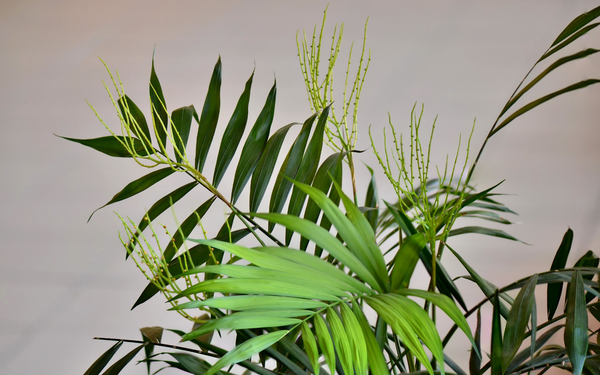
-
Description: Parlor palms are compact, slow-growing palms with delicate, arching fronds.
-
Care Tips: Allow the soil to dry out slightly between waterings and provide bright, indirect light. Parlor palms can tolerate lower light levels but may require more frequent watering in dimmer conditions.
-
Benefits: Parlor palms are non-toxic to cats and are known for their air-purifying properties. They can help remove indoor air pollutants and add a touch of greenery to any space without posing a risk to pets. They are an excellent option for beginners.
Ponytail Palm (Beaucarnea recurvata)
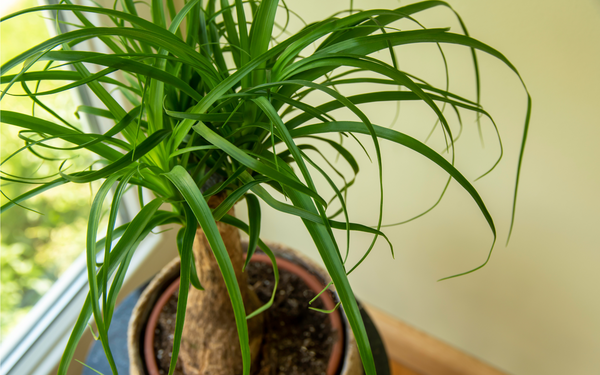
-
Description: Ponytail palms are unique, drought-tolerant plants with a swollen, bulbous base and long, slender leaves that cascade from the top. They are well-suited to bright, indirect light and require minimal maintenance.
-
Care Tips: Allow the soil to dry out completely between waterings and provide bright, indirect light. Ponytail palms are drought-tolerant and can thrive in dry indoor environments.
-
Benefits: Ponytail palms are safe for cats and add a sculptural element to indoor spaces. They are relatively low-maintenance and can tolerate neglect, making them ideal for busy pet owners.
Baby Rubber Plant (Peperomia obtusifolia)

-
Description: Baby rubber plants are compact, bushy plants with glossy, rounded leaves that resemble rubber. They are easy to care for and can thrive in a variety of indoor environments.
-
Care Tips: Allow the soil to dry out slightly between waterings and provide bright, indirect light. Baby rubber plants prefer moderate temperatures and can benefit from occasional pruning to maintain shape.
-
Benefits: Baby rubber plants are non-toxic to cats and add a touch of greenery to any room. They are relatively low-maintenance and can tolerate lower light conditions, making them suitable for various rooms in your home.
Christmas Cactus (Schlumbergera spp.)

-
Description: Christmas cacti are popular succulent plants with flat, segmented stems and vibrant, tubular flowers that bloom in winter.
-
Care Tips: Keep the soil evenly moist and provide bright, indirect light. Christmas cacti prefer cooler temperatures and can benefit from a period of reduced watering after blooming.
-
Benefits: Christmas cacti are safe for cats and provide a burst of color during the holiday season. They are relatively low-maintenance and can thrive in indoor environments with minimal fuss.
Baby's Tears (Soleirolia soleirolii)
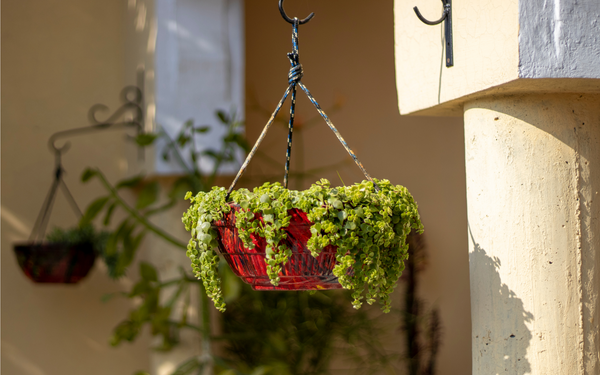
-
Description: Baby's tears are delicate, creeping plants with tiny, round leaves that cascade from trailing stems. They are well-suited to moist, shaded environments and make excellent ground covers or hanging basket plants.
-
Care Tips: Keep the soil consistently moist and provide bright, indirect light. Baby's tears prefer higher humidity levels and can benefit from regular misting or placement near a humidifier.
-
Benefits: Baby's tears are safe for cats and add a lush, carpet-like appearance to indoor spaces. They are ideal for bathrooms or other humid areas.
Polka Dot Plant (Hypoestes phyllostachya) 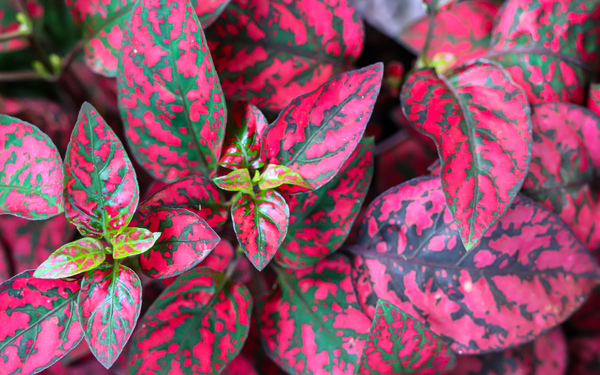
-
Description: Polka dot plants are compact, bushy plants with brightly colored leaves adorned with contrasting spots or speckles. They are popular for their vibrant foliage and easy-care nature.
-
Care Tips: Keep the soil evenly moist and provide bright, indirect light. Polka dot plants prefer moderate temperatures and can benefit from occasional pruning to maintain shape.
-
Benefits: Polka dot plants are non-toxic to cats and add a pop of color to any room. They are relatively low-maintenance and can tolerate lower light conditions, making them suitable for various rooms in your home.
Peacock Plant (Calathea makoyana)
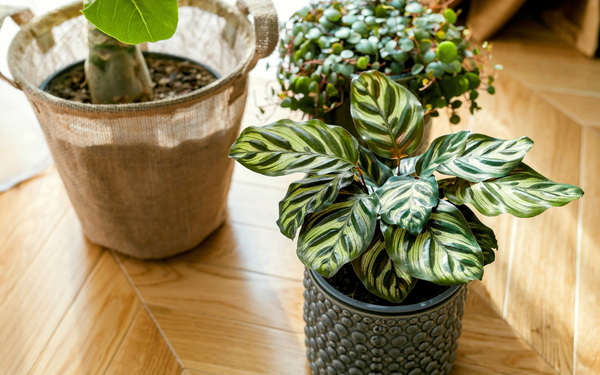
-
Description: Peacock plants are prized for their striking foliage, featuring intricately patterned leaves with bold stripes and markings. One intriguing aspect of the Peacock Plant is its unique leaf patterns and coloration, which resemble the intricate eyespots or "ocelli" found on the tail feathers of peacocks. These vibrant patterns serve a functional purpose for the plant by helping to attract pollinators in its native habitat.
-
Care Tips: Keep the soil consistently moist and provide bright, indirect light. Peacock plants prefer higher humidity levels and can benefit from regular misting or placement near a humidifier.
-
Benefits: Peacock plants are a cat-friendly choice, adding a hint of tropical sophistication to indoor settings. They require minimal maintenance and can thrive in areas with lower light levels, making them versatile options for any room in your home.
Money Tree (Pachira aquatica)
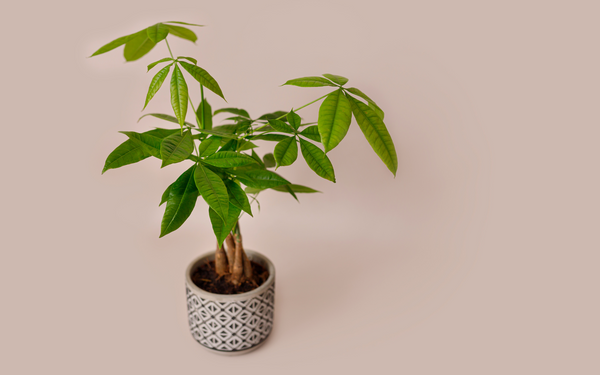
-
Description: Money trees are popular houseplants with braided trunks and glossy, palmate leaves. They are believed to bring good luck and prosperity and are easy to care for.
-
Care Tips: Allow the soil to dry out slightly between waterings and provide bright, indirect light. Money trees can tolerate lower light conditions but may require more frequent watering in dimmer conditions.
-
Benefits: Money trees are non-toxic to cats and add a touch of whimsy to any room. They are relatively low-maintenance and can thrive in indoor environments, making them ideal for cat households. Moreover, Money Trees are usually associated with good luck and prosperity in many cultures, particularly in Feng Shui. The Money Tree is often thought to bring positive energy and financial abundance to the home or workplace where it's placed. The braided trunk of the Money Tree is believed to symbolize unity, while the five leaves on each stem represent the five elements of Feng Shui: wood, water, earth, metal, and fire. The rounded leaves of the Money Tree are also said to resemble coins, further enhancing its association with wealth and prosperity.
While all these plants are considered non-toxic and safe for cats, it's always a good idea to supervise interactions between your cats and plants.
It’s always recommended to keep an eye on them because the ingestion of large quantities can cause gastrointestinal irritation, and also in the mouth and throat if they are chewed on excessively. Sometimes, in a low number of cases, allergies such as skin irritation or respiratory issues may appear, and it's essential to address them promptly.
Introducing New Greenery: How to Do It Safely in a Cat-Friendly Home
Introducing plants into a home shared with cats requires careful consideration to ensure the safety of both your feline friends and your greenery.
Here are some helpful tips to create a harmonious environment where plants and pets can coexist peacefully:
- Choose Cat-Safe Plants: Prioritize plants that are non-toxic to cats to minimize the risk of accidental ingestion. You already have an amazing selection in the previous section!
- Secure Plants Safely: Some cats may be tempted to explore or play with potted plants, leading to potential accidents or damage. Secure plants in sturdy pots or planters to prevent tipping and use stable surfaces or plant stands to elevate them out of reach.
- Consider Placement Carefully: Place plants in areas that are inaccessible or less appealing to curious cats. Consider utilizing hanging baskets, tall shelves, or plant stands to elevate plants and discourage exploration.
At this point, I recommend our article How to STOP Your Cat from Eating Your Plants (Proven Methods)
- Provide Alternative Attractions: Offer alternative outlets for your cat's natural behaviors, such as providing designated scratching posts, toys, or interactive play sessions. Redirecting your cat's attention to appropriate activities can help minimize their interest in plants.
Don't miss our article Are Cat Trees Worth It? YES! - Here's Why to know more about this.
- Incorporate Cat-Friendly Greens: Consider adding cat-friendly grasses or herbs, such as wheatgrass or catnip, to your indoor garden. These plants can provide safe and stimulating enrichment for your cat while satisfying their instincts.
By following these tips, you can create a cat-friendly home environment where plants and pets can thrive together. With careful planning, supervision, and appropriate precautions, you can enjoy the beauty of indoor gardening while keeping your furry companions safe and happy.
Take home message!
In conclusion, creating a cat-friendly home with non-toxic plants offers numerous benefits for both you and your feline companions. By selecting safe plants and implementing thoughtful care strategies, you can enjoy the beauty of indoor gardening while ensuring your pets' well-being.
With a wide variety of cat-safe plants available, there are options to suit every style and preference. Additionally, introducing plants can provide valuable enrichment for your cats, promoting physical and mental health.

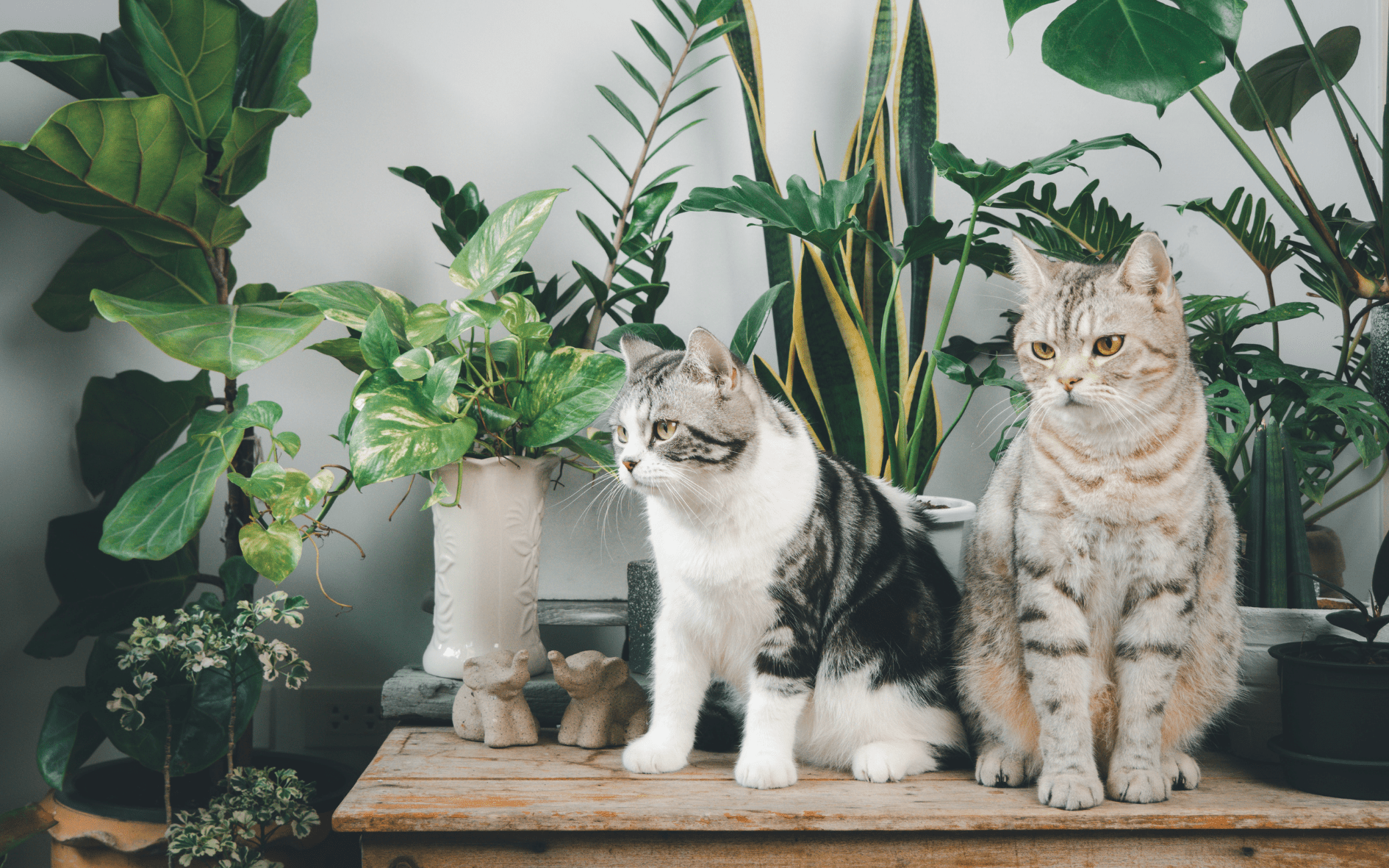
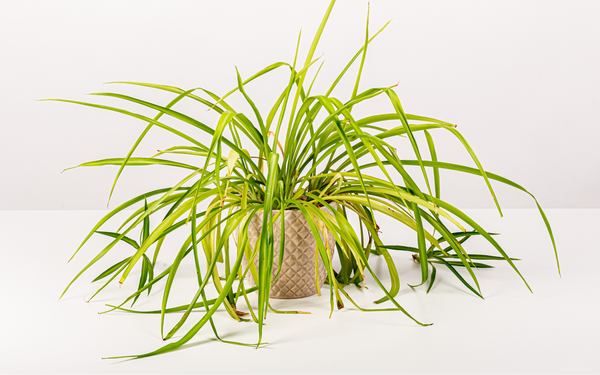
0 comments